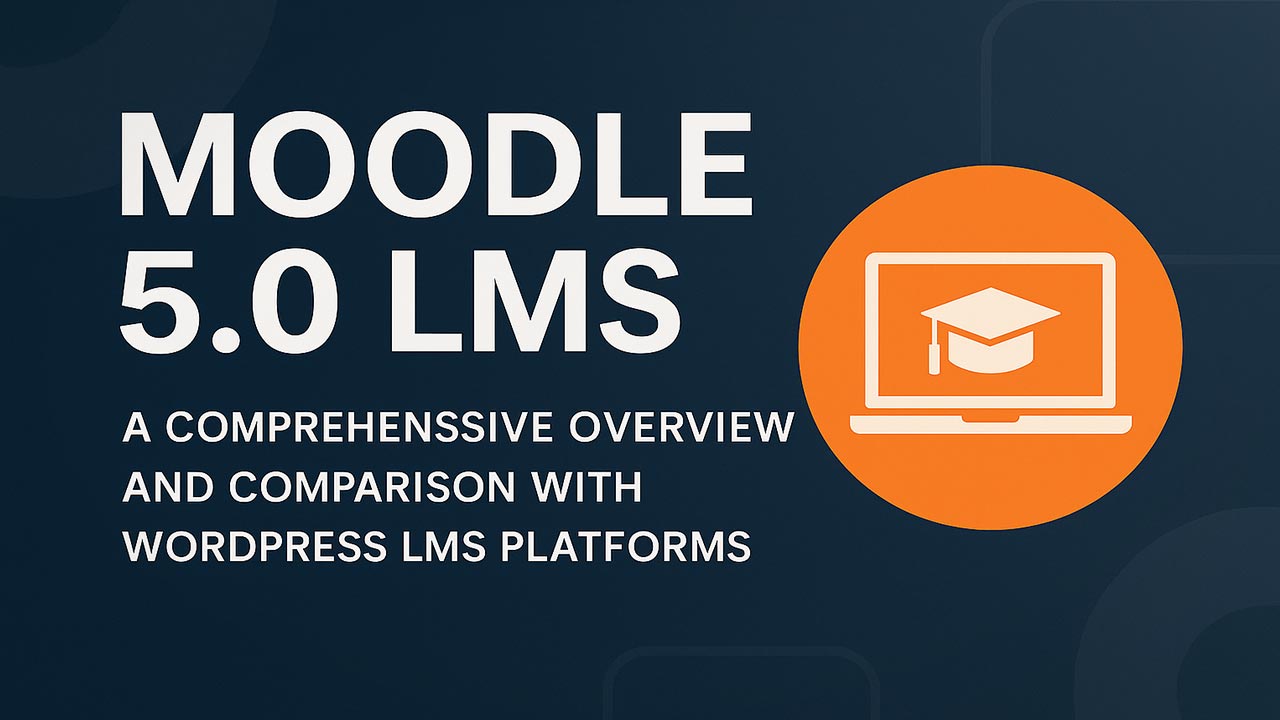Moodle 5.0 LMS Review: Features, Installation, and Comparison with WordPress LMS Platforms
My review provides an in-depth analysis of Moodle 5.0 LMS, detailing its new features, installation process, customization capabilities, and a comparative overview with WordPress-based LMS platforms.
Table of Contents
- Introduction to Moodle 5.0 LMS
- Key Features of Moodle 5.0
- Technical Specifications and Installation
- Customization Capabilities
- Comparison with WordPress LMS Platforms
- Personal Experience with Moodle 5.0
- Top 5 Frequently Asked Questions
- Final Thoughts
- Resources
Introduction to Moodle 5.0 LMS
Moodle 5.0, released on April 14, 2025, is the latest iteration of the widely-used open-source Learning Management System (LMS). Designed to enhance the online learning experience, Moodle 5.0 introduces several new features and improvements aimed at educators, administrators, and learners alike.
Key Features of Moodle 5.0
Activities Overview Page
Moodle 5.0 introduces a redesigned Activities Overview page, providing a centralized dashboard for all course activities. This feature allows educators and learners to easily track assignments, forums, quizzes, and more, enhancing course management and engagement.
Human-Readable Dates
The platform now displays dates in a more intuitive format, using terms like “Today,” “Yesterday,” or “Tomorrow,” improving the user experience by making timelines more relatable.
Course Sorting by Start Date
Users can now sort courses based on their start dates, allowing for better organization and planning, especially beneficial for institutions managing multiple courses.
SMS Notifications
With the integration of an SMS gateway (Modica), Moodle 5.0 enables administrators to send important updates via text messages, ensuring timely communication even when users are offline.
Configurable Backup File Names
Administrators can define default naming templates for backup files, streamlining the backup process and making file management more efficient.
Modernized Interface
The adoption of Bootstrap 5 enhances the platform’s responsiveness and accessibility, providing a more cohesive and modern user interface.
Technical Specifications and Installation
Server Requirements
To install Moodle 5.0, ensure your server meets the following minimum requirements:
- Web Server: Apache, Nginx, or IIS
- Database Server: MariaDB, MySQL, or PostgreSQL
- PHP Version: 7.4 or higher
- PHP Extensions: intl, mbstring, soap, xml, curl, gd, zip, mysqli.
Installation Process
The installation involves several steps:
- Set Up Your Server: Ensure your web server and database server are properly configured.
- Download Moodle: Obtain the latest Moodle 5.0 package from the official website.
- Create a Database: Set up an empty database for Moodle.
- Configure moodledata Directory: Create a directory for Moodle to store its data and ensure it’s secured.
- Run the Installer: Use the web-based installer to complete the setup.
Customization Capabilities
Moodle 5.0 offers extensive customization options, allowing institutions to tailor the platform to their specific needs. Users can modify themes, adjust layouts, and integrate various plugins to enhance functionality. While there are tutorials available on platforms like YouTube, there’s potential for more comprehensive resources to assist users in the customization process.
Comparison with WordPress LMS Platforms
When comparing Moodle 5.0 with WordPress-based LMS platforms like LifterLMS, Sensei LMS, LearnDash, and Tutor LMS, several distinctions emerge.
- Purpose: Moodle is a dedicated LMS designed specifically for educational purposes, whereas WordPress LMS plugins extend the functionality of a content management system.
- Customization: WordPress offers a vast array of themes and plugins, providing flexibility in design and functionality. Moodle, while customizable, has a steeper learning curve.
- Scalability: Moodle is well-suited for large institutions with complex needs, while WordPress LMS platforms are ideal for individual educators or small businesses.
My Experience with Moodle 5.0
Installing Moodle 5.0 was straightforward, taking approximately 15-20 minutes. The process involved setting up a MariaDB database, configuring a CRON job, adding a PHP Extension, and extracting and configuring the main software. I found several customization tutorials on YouTube, but IMO there’s room for improvement in this area. The customization capabilities are extensive, reminiscent of platforms like Open Real Estate. Given its features and flexibility, I plan to continue using Moodle 5.0 and have even installed it on my Content Publisher Academy website.
Top 5 Frequently Asked Questions
Final Thoughts
Moodle 5.0 represents a significant advancement in the realm of online learning platforms. Its new features and improvements enhance the user experience, making it a compelling choice for educational institutions and individual educators alike. While WordPress LMS platforms offer flexibility and ease of use, Moodle’s dedicated LMS structure provides robustness and scalability for more complex educational needs. With its open-source nature and extensive customization capabilities, Moodle 5.0 stands out as a powerful tool in the e-learning landscape.
Resources
- Moodle 5.0 Release Notes: moodledev.io
- Moodle Installation Guide: Moodle Docs
- Moodle vs. WordPress LMS Comparison: Sensei LMS
- Moodle Customization Tutorial: YouTube




Leave A Comment